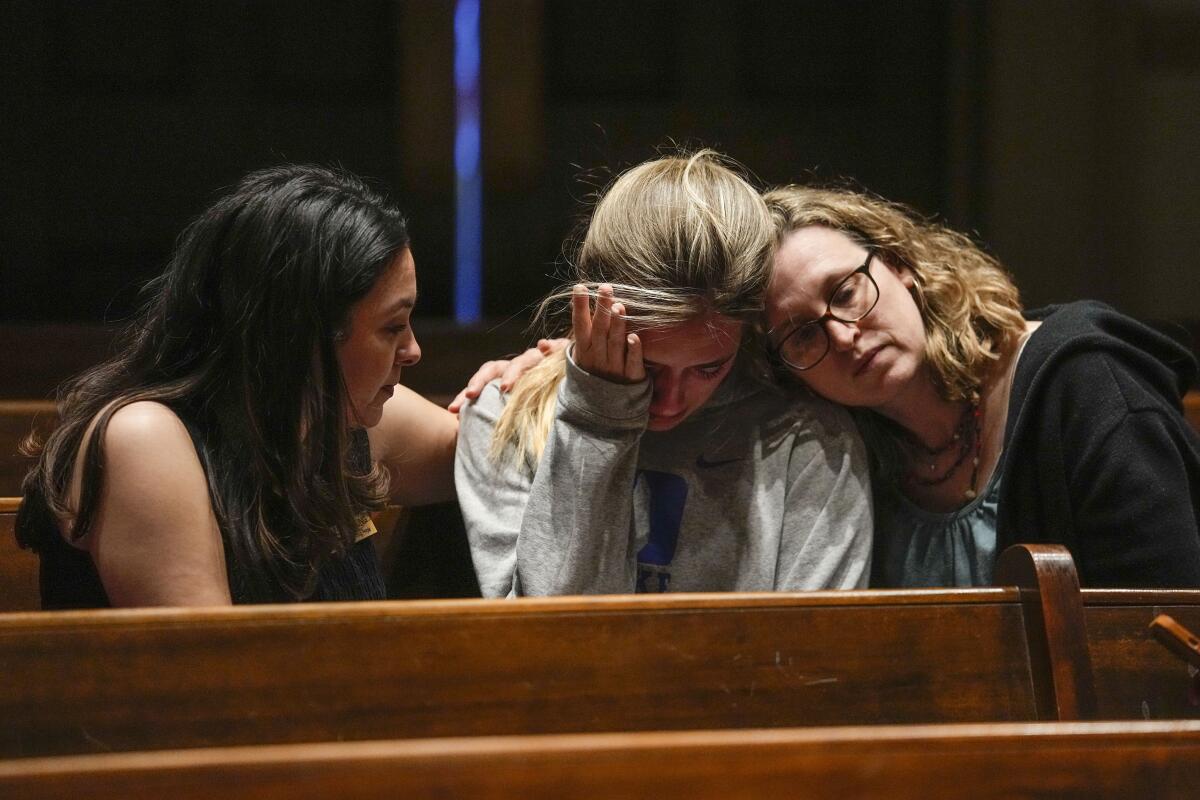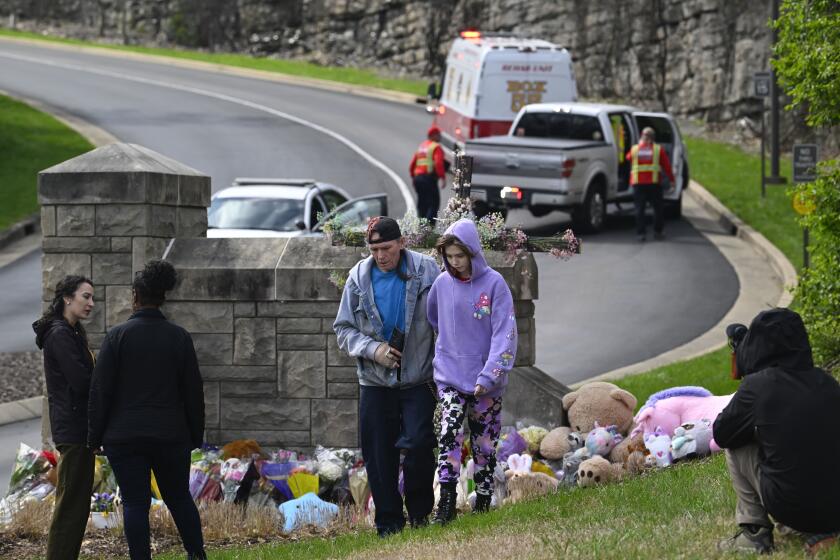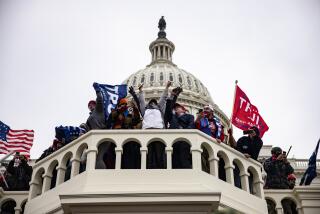Column: The Tennessee school shooting shows what the 2nd Amendment was not meant to protect

- Share via
Sandy Hook is the mass shooting I hear mentioned most often when people talk about the moment they knew nothing would change.
A madman murders 26 people — most of them 6 or 7 years old — and Congress was still unable to pass substantive gun or mental health legislation. The assault weapons ban that Sen. Dianne Feinstein introduced in 2013 was defeated in the Senate with 15 Democrats siding with Republicans in opposition — not that it mattered. Even if the yeas and nays ran down party lines, the measure would have been five short of passage.
For the record:
7:19 p.m. March 28, 2023An earlier version of this column incorrectly suggested that President Kennedy’s assassination was 70 years ago. It was 60 years ago.
Historical surges in violence called forth common-sense movements to restore peace. That’s what we need now.
For a lot of people, that vote 10 years ago was a clear sign that the National Rifle Assn. and the gun lobby had won. I believe that indication came 60 years ago with the assassination of President Kennedy.
Consider this: In 1963 the president of the United States was murdered by someone who bought his rifle by mail for $12.78, and yet the piece of gun legislation his death is credited with inspiring didn’t become law until five years later.
Just weeks after Kennedy’s death, Sen. Thomas Dodd (D-Conn.) introduced a bill to ban mail-order gun sales (among other restrictions), and it got stuck in the Commerce Committee.
In its magazine, the NRA called the bill “irrational emotionalism.” It was in an earlier issue of the same magazine where Lee Harvey Oswald saw an ad for the gun he used to kill Kennedy.
There were other bills introduced, and they too fell short of the finish line. Kennedy’s assassination, as horrifying as it was, did not bring urgency.
Dodd had warned colleagues about the mail-order risk and growing gun violence as early as 1961. But elected officials spun in circles for five more years after Kennedy’s death while Malcolm X, the Rev. Martin Luther King Jr. and Sen. Robert Kennedy were all gunned down.
If it weren’t for the Black Panther Party, Dodd’s cause might never have made it out of committee. However, after armed members of the group entered the Capitol in Sacramento in 1967 to protest a bill restricting open carry, the winds shifted in California.
“There’s no reason why on the street today a citizen should be carrying loaded weapons,” then-Gov. Ronald Reagan said at the time, adding that it was a “ridiculous way to solve problems that have to be solved among people of good will.”
After President Kennedy was murdered, the debate continued for years.
Yet after the Black Panthers issued a statement in 1967 — which read in part, “The Second Amendment of the Constitution of the United States gives us a right to bear arms. We therefore believe that all Black people should arm themselves for self defense” — there was gun control in California that same year. And the next year, Dodd’s near 10-year effort was rewarded with national legislation against mail-order gun sales.
As Carol Anderson points out in her book “The Second: Race and Guns in a Fatally Unequal America,” it wasn’t the death of Kennedy that got the NRA to allow gun control in California. It was the sight of armed Black men.
Don’t get mad at me. I’m just the messenger. The message is the 130 mass shootings so far in 2023.
Not every mass shooting is the same. What motivated the assailant in Nashville appears to be different from what motivated the attacker in Monterey Park, which was different from Pulse, which was different from Sandy Hook. Each shooting can lead to a different conversation. And the gun lobby has become quite adept at changing the subject.
“What about Chicago?” has long been a favorite.
More often today’s gun law critics play whataboutism with proposals, highlighting suggested restrictions that would not have prevented some other mass shooting. It’s as if the goal were legislative perfection as opposed to saving as many lives as possible. While co-anchoring an L.A. Times TV special last week about the Monterey Park shooting, I asked a young woman by the name of Nathalia Jackson why she kept track regularly of gun violence statistics. She said it’s in part because she keeps hoping they’ll get better.
Since that conversation, there have been at least two school shootings, including in Nashville, where six families have become part of a group that no one wants to join, but whose membership continues to grow nonetheless.
Yet, it’s because the membership continues to grow that those elected officials — the ones who only have thoughts and prayers to offer in moments like this, the ones who see gun debates as a fundraising opportunity, the ones hoping the NRA hands them a gold star — are running out of places to hide.
I’m sure 60 years ago there were parts of America that felt untouched by the nation’s brewing gun violence. Yes, there were high-profile assassinations on TV, but Malcolm X, King and the Kennedys were all murdered in big cities. Surely, there isn’t a problem with gun violence in a place like … Newtown.
Or a college campus in Michigan.
A store in El Paso.
Churches and synagogues.
This cannot be the kind of freedom the 2nd Amendment was intended to protect.
This cannot be the version of freedom members of Congress want to leave behind for young people like Nathalia to grow up in and make sense of. Keeping track of how many young people have been shot and killed isn’t freedom.
It’s frightening.
More to Read
A cure for the common opinion
Get thought-provoking perspectives with our weekly newsletter.
You may occasionally receive promotional content from the Los Angeles Times.












